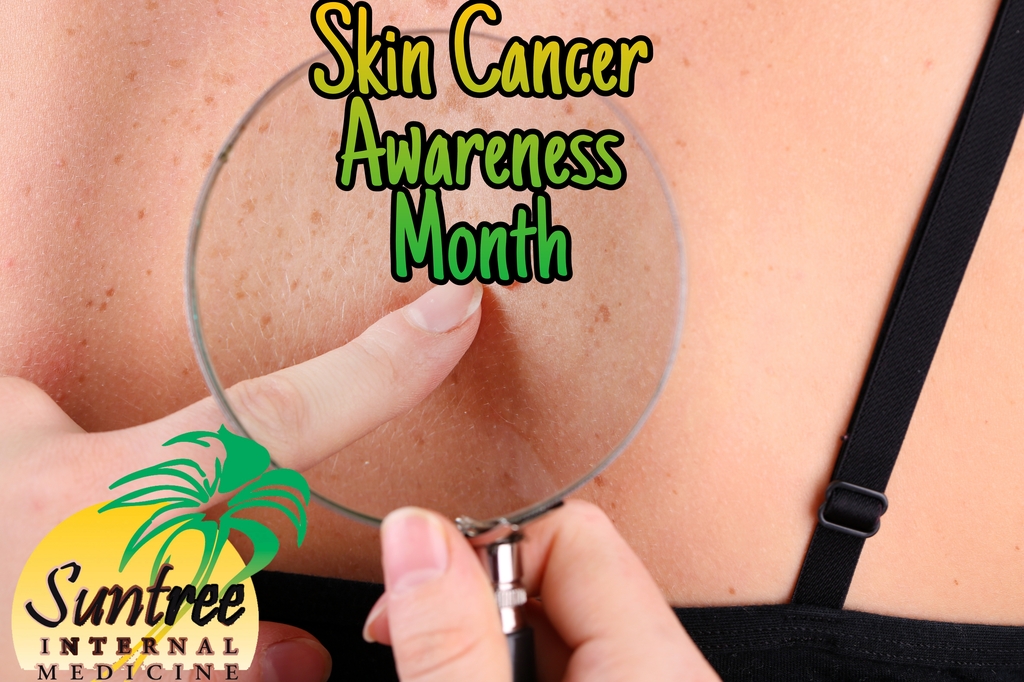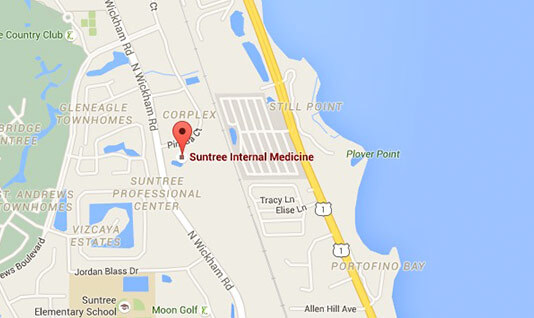May is Skin Cancer Awareness Month
Posted on: April 22, 2022

Skin cancer in general is the most common type of cancer in the United States. There are various types of skin cancer, some more prevalent than others, we’re going to take a look at the most common types. When discussing skin cancer, it’s a great opportunity to also discuss skin care risks and preventions.
Common Types of Skin Cancer
• Basal Cell Carcinoma - This type of cancer typically occurs in the sun-exposed area of your body, like the face or neck for example. Basal Cell Carcinoma can appear as a pearly/waxy bump, a bleeding or scabbing sore that heals and returns or a flat, flesh-colored or brown scar-like lesion, among other forms.
• Melanoma - This type of skin cancer can develop anywhere on your body, in an existing mole or skin that appears normal. In women, it most often develops on the lower legs and in men, it most often develops on the face or trunk. For both men and women, it can appear in areas that do not get any exposure to the sun. Signs can include a mole that changes in color, size, texture, a large brownish spot with darker specks, a painful lesion that burns or itches, or dark lesions on your palms, fingertips, soles, or mucous membrane lining found in the nose, mouth, vagina or anus.
• Nonmelanoma - Nonmelanoma refers to all types of cancer that can occur on the skin that are not melanoma. This includes several types of cancer that fall under this category including basal cell carcinoma and squamous cell carcinoma.
• Squamous Cell Carcinoma - This type of skin cancer commonly appears in areas of the body that are exposed to sunlight, like the face, arms, hands, etc. Areas that aren’t exposed to the sun often can also develop squamous cell carcinoma especially if they have a darker skin tone. Signs can include a firm, red nodule or a flat lesion with a crusted, scaly surface.
Skin Cancer Risks
According to the CDC, although anyone can get skin cancer, there are individuals with certain characteristics that put them at higher risk including but not limited to:
• Skin that burns, reddens, freckles easily or becomes painful in the sun
• Lighter skin tones
• Blonde or red hair
• Blue or green eyed
• Family history of skin cancer
• Personal history of skin cancer
• Certain types / large number of moles




